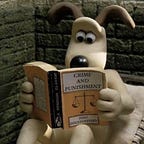Re:Evaluation
Mandatory texts
Bardzell, J., Bolter, J., & Löwgren, J. 2010. “Interaction criticism: three readings of an interaction design, and what they get us”. In Interactions. 17:2. 32–37.
Greenberg, S., & Buxton, B. 2008. “Usability evaluation considered harmful (some of the time)”. In Proceedings of CHI ’08.
Additional readings
Nørgaard, M., & Hornbæk, K. 2006. “What do usability evaluators do in practice?: an explorative study of think aloud testing”. In Proceedings of DIS ‘06.
Preece, J., Rogers, Y., & Sharp, H. 2002. “Introducing Evaluation”. In Interaction Design. Wiley.
Sengers, P., & Gaver, B. 2006. “Staying open to interpretation: engaging multiple meanings in design and evaluation”. In Proceedings of DIS ‘06.
Notes on the texts
- Bardzell, J., Bolter, J., & Löwgren, J.: “Interaction design, in general, does not really accommodate criticism and the role of the critic”
- Some interaction design works are content-heavy … some are created to give the user an experience
- “the distinction between content and interface is becoming increasingly untenable and unproductive”
- They heavily feature the user in a performance aspect
- “But when we design, we inevitably design with … a certain type of user in mind.” This user “does not exist in empirical reality and must be constructed out of a combination of available data and a designer’s experience and imagination.”
- “As a critical strategy, we can explore how designers build the hypothetical user into their designs and how that hypothetical user is “made visible” in the design itself.”
- Greenberg, S., & Buxton, B.: usability evaluation is an important part of the interaction design process
- This should not be done too early as it can interfere with creativity
- “The choice of evaluation methodology — if any — must arise from and be appropriate for the actual problem or research question under consideration.”
- “The problem is that academics and practitioners often blindly apply usability evaluation to situations where […] it gives meaningless or trivial results, and can misdirect or even quash future design directions.”
- Differentiate between sketches (early design phase) and prototypes (approximation of finished product)
Learnings from / thoughts on the texts
- Evaluation during and after the design process is good
- Make sure to do this at the correct time so as not to interfere with the process, but also ensure that the product is actually fit for the user
- Be aware of the distinction between the real user and the hypothetical ideal user in your mind
Notes on the class
- A sketch can be anything, not only a literal “sketch” on paper
- Exercise: make a prototype as a solution for people who lost their friends at a festival.
Evaluation for Elena: Seems like a solid concept. I like that it is big and attention-grabbing. What would the different screens show? How exactly would it work that people find each other again through the screens?
Evaluation by Luis:
